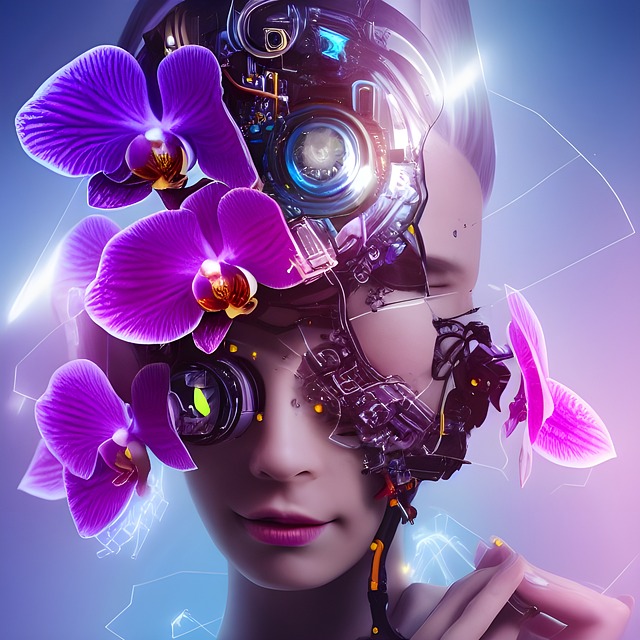# AI Art Revolution: How Machine Learning is Transforming the Landscape of Visual Expression
The intersection of art and technology has always been a fertile ground for innovation. In recent years, artificial intelligence (AI) has emerged as a transformative force in the world of visual expression. By leveraging machine learning algorithms, artists and technologists are pushing the boundaries of creativity, leading to a new era of artistic exploration. This article delves into the ways AI is reshaping the art landscape, exploring its implications for artists, the creative process, and the broader cultural context.
## The Rise of Generative Art
Generative art, a practice that uses algorithms to create visual works, has gained immense popularity with the advent of AI technologies. Artists are now able to utilize machine learning models to generate unique pieces of art that would have been unimaginable just a few years ago. These models, trained on vast datasets of existing artworks, can produce novel images that mimic various styles, techniques, and aesthetics.
In this context, one of the most notable advancements is the use of Generative Adversarial Networks (GANs). These networks consist of two neural networks: a generator that creates images and a discriminator that evaluates them. This dynamic interplay allows for the continuous improvement of the generated art, resulting in increasingly sophisticated outputs. The ability to create art that is both original and reflective of existing styles challenges traditional notions of authorship and creativity, prompting artists to rethink their roles in the creative process.
Moreover, generative art has opened up new avenues for collaboration between artists and machines. Artists can now act as curators of AI-generated content, selecting and refining the outputs to create cohesive works. This partnership not only enhances artistic expression but also encourages experimentation, as artists can explore countless variations and styles without the constraints of manual creation.
## Redefining the Creative Process
While the tools and techniques employed in art have evolved over centuries, AI introduces a paradigm shift in the creative process itself. Traditionally, artists have relied on their skills, intuition, and experience to create. However, with AI, the creative process becomes a dialogue between human and machine. This collaboration allows for new methods of ideation and execution, as artists can harness the computational power of AI to generate ideas that might not have emerged through traditional means.
The integration of AI into the creative workflow can significantly enhance efficiency. For instance, artists can use AI algorithms to automate repetitive tasks such as color matching, composition adjustments, and even basic sketching. By streamlining these processes, artists can focus more on the conceptual and emotional aspects of their work. This shift not only increases productivity but also allows for deeper exploration of complex themes and ideas.
Additionally, AI can serve as a source of inspiration, providing artists with unexpected visual prompts that can spark new directions in their work. By analyzing vast amounts of data, AI can identify trends, styles, and motifs that may resonate with contemporary audiences. This capability enables artists to stay relevant in an ever-evolving cultural landscape, ensuring that their work engages with current dialogues and movements.
## Ethical Considerations and Future Implications
As with any technological advancement, the rise of AI in art raises important ethical questions. One significant concern revolves around authorship and ownership. If an AI generates a piece of art, who holds the rights to that work? This dilemma challenges conventional understandings of creativity and intellectual property, prompting discussions among artists, legal experts, and policymakers.
Furthermore, the potential for AI to replicate existing styles raises questions about originality and authenticity. Critics argue that reliance on AI-generated content may lead to a homogenization of artistic expression, as algorithms tend to favor popular trends and styles. This concern highlights the need for artists to maintain a critical perspective on the tools they use, ensuring that their work remains a reflection of their unique voices rather than a mere product of algorithmic processes.
Looking ahead, the future of AI in art is both exciting and uncertain. As technology continues to evolve, we can expect even more sophisticated tools that blur the lines between human and machine creativity. The potential for AI to democratize art creation is particularly noteworthy, as it allows individuals with limited artistic skills to produce compelling visual works. This democratization could lead to a more diverse range of voices and perspectives in the art world, enriching the cultural tapestry.
In conclusion, the AI art revolution is reshaping the landscape of visual expression in profound ways. Through generative art, a redefined creative process, and ongoing ethical discussions, AI is not only transforming how art is created but also challenging our understanding of creativity itself. As artists and technologists continue to collaborate, the possibilities for innovation are limitless, paving the way for a future where human and machine creativity coexist harmoniously. The journey ahead promises to be as dynamic and diverse as the art it produces, inviting us all to engage with the evolving narrative of visual expression.

